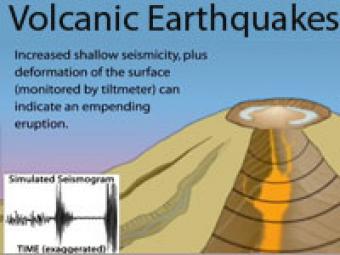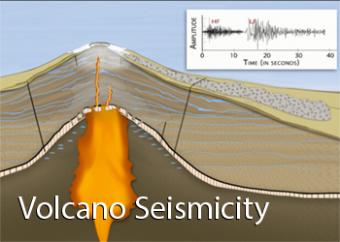Novice Spanish

What do earthquakes tell us about a volcano?
Earthquake activity beneath a volcano almost always increases before an eruption because magma and volcanic gas must first force their way up through shallow underground fractures and passageways. When magma and volcanic gases or fluids move, they will either cause rocks to break or cracks to vibrate.
CLOSED CAPTIONING: A .srt file is included with the downloiad. Use appropriate media player to utilize captioning.

Volcano deformation can provide clues about what is happening deep below the surface. Two techniques used to monitor deformation include Tiltmeters and GPS.

Magmatic gas is the driving force of volcanic eruptions. A primary objective in gas monitoring is to determine changes in the release of certain gases from a volcano, chiefly carbon dioxide and sulfur dioxide. Such changes can be used with other monitoring information to provide eruption warnings and to improve our understanding of how volcanoes work.

Earthquakes near and beneath volcanoes alert may indicate that magma and volcanic gases are on the move. This animation represents generalized patterns of seismic and geological activity at some, but not all, long dormant stratovolcanoes worldwide during the months to hours leading up to an eruption. The volcano-tectonic earthquake pattern is common at long-dormant volcanoes but uncommon at frequently active volcanoes.( USGS-IRIS collaboration)